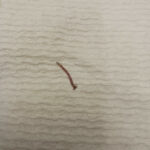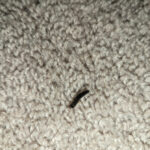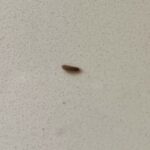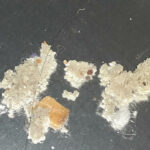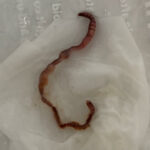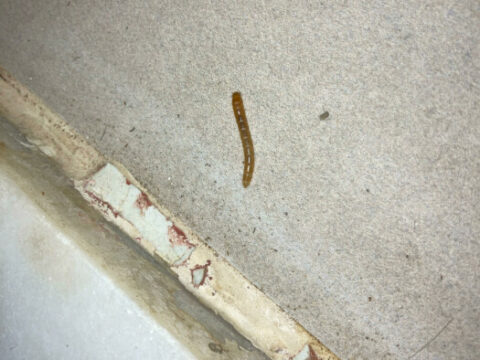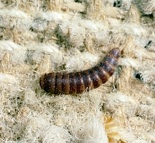Wax worms are both pests to those who keep bees, and a popular food source for those who keep reptiles and amphibians. They also can be the worm of choice for fish bait. If you are beekeeper, you will probably despise wax worms, while those who own aquarium pets collect and raise them, then feed them out as a delicacy, much like a special dessert.
Wax worms are the caterpillar, or larva, stage of the wax moth. They are also called wax millers, bee moths, honeycomb moths, or even webworms. The two known species, which are referenced by size, are the lesser wax worm and the greater wax worm.
Like other moths, wax worms typically develop through four stages: eggs, larva, pupa, and adult. For beekeepers, wax worms are destructive at any stage. Adult moths will slip past the sentry bees and lay eggs. As caterpillars, they consume particles in the honey that may render the comb useless for selling. As they begin to spin a cocoon to enter the pupa stage, wax worms eat into the comb structure and frame of a beehive to attach their silk.
The combination of feeding and chewing can last up to seven months, but an entire bee colony can be decimated in thirty days, depending on the temperature. Wax worms are not entirely at fault for their destructive habits, however. A colony might disintegrate regardless, if a queen bee dies or the bee population dwindles, although it is also true that these hives are most susceptible to wax worm invasions.
While vilified by beekeepers, wax worms are a thriving market for scientific study, live fish bait, and as feeders. They contain high fat and protein content, which makes them an ideal treat for sickly or underweight reptiles and other types of aquarium animals. They should be fed out with some caution, however, as they are so tasty that some animals will decline other less-fattening food in favor of wax worms.
If you decide to raise your own wax worms, as some people do, be sure to purchase the proper glass or metal container. Wax worms are great escape artists, as they will chew through wood and plastic. If you’re lucky enough to know a beekeeper, you should be able to find a ready-made supply of wax worms; otherwise, they should be available through most pet supply stores and bait shops.
Recommended reading (click on the picture for details):
All About Worms is always free, always reader-supported. Your tips via CashApp, Venmo, or Paypal are appreciated! Receipts will come from ISIPP Publishing.





